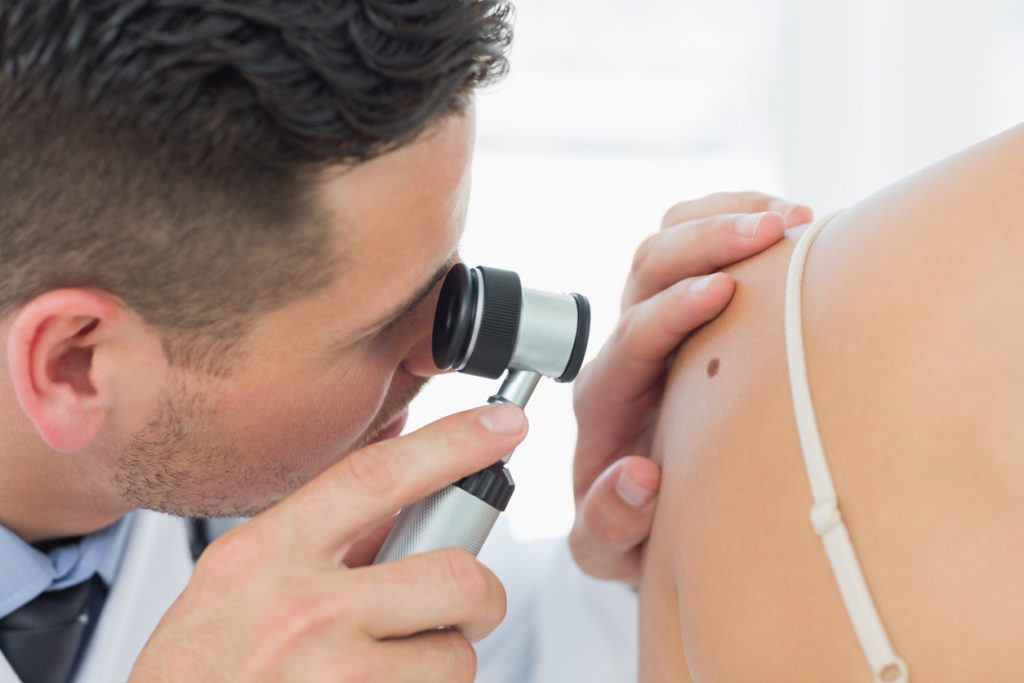
Written by Trevan Fischer, M.D., Assistant Professor of Surgical Oncology and Assistant Program Director of Complex General Surgical Oncology Fellowship at the Saint John’s Cancer Institute.
Melanoma is deadly type of skin cancer and incidences are rising worldwide.
According to the American Cancer Society, 91,270 people in the United States are estimated to be diagnosed with melanoma in 2018. Help protect you and your family by learning the risk factors for this dangerous type of skin cancer.
Risk Factors
There are many risk factors that contribute to the development of melanoma. It can occur due to a personal or family history of melanoma, light skin pigmentation, having a fair complexion with blonde or red hair, light skin, and blue eyes. Other risk factors include excessive UV exposure, tanning beds, and a tendency to sunburn. Individuals with a high number of moles are also at risk.
Ultra-Violet (UV) Exposure
One risk factor that is modifiable is ultra-violet (UV) exposure. As many of you know, UV exposure increases the risk of many different types of skin cancers. Chronic sun exposure puts one at risk of non-melanoma skin cancers, basal cell carcinoma and squamous cell carcinoma, as well as melanoma. However, melanoma is thought to be different. It is thought that the timing and intensity of the sun damage is what increases your risk of melanoma. Studies have shown that individuals with five or more severe or blistering sunburns in childhood or adolescence have a twofold increased risk of melanoma. These melanomas develop many years later, but it appears to be related to the damage done early in life. Ultraviolet B radiation plays a bigger role in the development of melanoma, but we now know that exposure to ultraviolet A radiation also appears to be a significant risk factor. UVA radiation is found in tanning beds and psoralen-ultraviolet A radiation [PUVA] therapy is used for some skin conditions.
Skin Cancer Prevention is all About Protection!
The importance of sun protection early in life is critical in reducing the risk of melanoma, specifically avoiding severe or blistering sunburns. Wearing sunscreen that blocks both UVA and UVB radiation, avoiding sun during peak UV times, and wearing sun-protective clothing are all crucial in minimizing the risk of melanoma. Remember to avoid artificial tanning booths and conduct self-exams to check for changes to any skin lesions. Individuals with increased risk should be seen regularly by a dermatologist or skin cancer specialist. As with many different cancers, early detection in melanoma is key.
If you or a loved one has melanoma or any other type of skins cancer, contact our center for Melanoma, Skin and Soft Tissue Tumors to schedule an appointment with our team.

